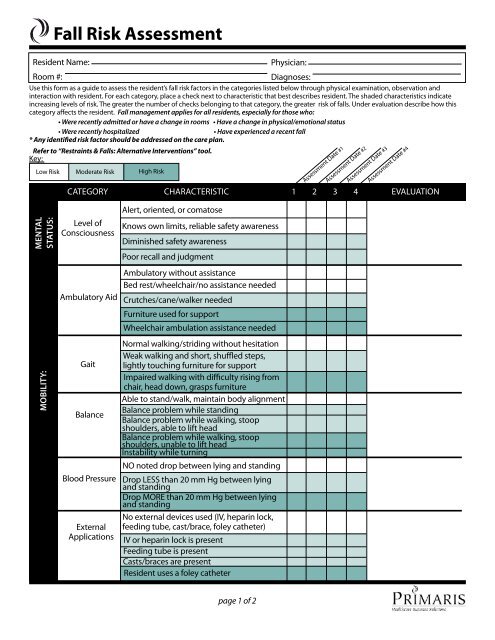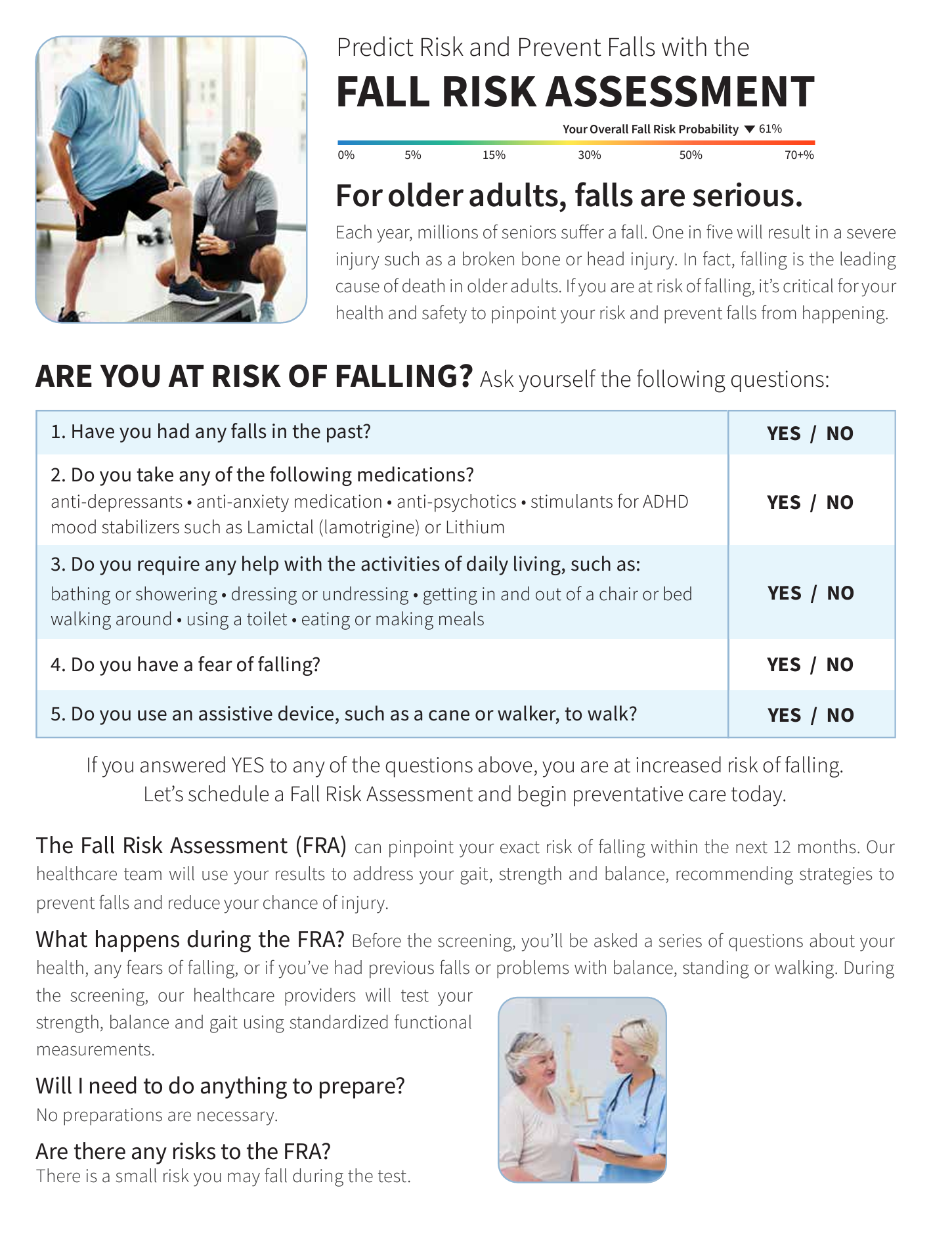All about Dementia Fall Risk
All about Dementia Fall Risk
Blog Article
What Does Dementia Fall Risk Mean?
Table of ContentsAll about Dementia Fall RiskDementia Fall Risk Fundamentals ExplainedThe Definitive Guide to Dementia Fall RiskFascination About Dementia Fall Risk
A loss danger analysis checks to see exactly how likely it is that you will certainly drop. It is mainly done for older grownups. The assessment normally consists of: This includes a series of concerns about your total wellness and if you have actually had previous drops or issues with balance, standing, and/or walking. These tools examine your toughness, balance, and gait (the way you walk).STEADI includes testing, analyzing, and intervention. Treatments are referrals that may reduce your danger of dropping. STEADI includes 3 steps: you for your threat of succumbing to your risk factors that can be boosted to attempt to stop falls (for example, equilibrium troubles, damaged vision) to decrease your threat of dropping by making use of efficient methods (as an example, giving education and resources), you may be asked several concerns consisting of: Have you fallen in the previous year? Do you really feel unsteady when standing or walking? Are you worried concerning dropping?, your copyright will test your stamina, balance, and gait, using the following fall analysis tools: This examination checks your stride.
If it takes you 12 seconds or more, it may mean you are at greater risk for a fall. This test checks strength and equilibrium.
Relocate one foot midway forward, so the instep is touching the big toe of your various other foot. Relocate one foot completely in front of the other, so the toes are touching the heel of your other foot.
Not known Details About Dementia Fall Risk
Many drops occur as a result of multiple adding variables; therefore, taking care of the danger of dropping starts with recognizing the elements that contribute to fall danger - Dementia Fall Risk. Some of the most pertinent risk elements include: Background of previous fallsChronic medical conditionsAcute illnessImpaired stride and equilibrium, reduced extremity weaknessCognitive impairmentChanges in visionCertain high-risk medicines and polypharmacyEnvironmental elements can also boost the threat for falls, including: Insufficient lightingUneven or harmed flooringWet or slippery floorsMissing or harmed handrails and get barsDamaged or poorly fitted devices, such as beds, wheelchairs, or walkersImproper use assistive devicesInadequate supervision of the individuals staying in the NF, consisting of those that show aggressive behaviorsA effective loss danger administration program calls for a detailed scientific analysis, with input from all members of the interdisciplinary group

The care plan must additionally include interventions that are system-based, such as those that advertise a risk-free atmosphere (proper lights, hand rails, get bars, and so on). The performance of the interventions ought to be assessed periodically, and the treatment strategy this contact form revised as necessary to show modifications in the loss risk assessment. Implementing a loss danger monitoring system using evidence-based finest method can decrease the occurrence of drops in the NF, while limiting the capacity for fall-related injuries.
Some Known Facts About Dementia Fall Risk.
The AGS/BGS guideline advises evaluating all adults matured 65 years and older for loss threat annually. This screening includes asking individuals whether they have fallen 2 or even more times in the previous year or sought medical interest for a fall, or, if they have actually not dropped, whether they feel unsteady when walking.
Individuals that have fallen once without injury ought to have their balance and stride evaluated; those with gait or equilibrium problems should get additional evaluation. A history of 1 loss without injury and without stride or equilibrium troubles does not necessitate more evaluation beyond ongoing yearly loss risk testing. Dementia Fall Risk. A fall threat analysis is needed as part of the Welcome to Medicare examination

The 15-Second Trick For Dementia Fall Risk
Documenting a drops history is among the high quality signs for autumn prevention and management. A vital component of risk analysis is a medication evaluation. A number of courses of drugs increase loss risk (Table 2). copyright medicines specifically are independent predictors of drops. These drugs tend to be sedating, change the sensorium, and hinder continue reading this balance and stride.
Postural hypotension can usually be eased by decreasing the dosage of blood pressurelowering medicines and/or quiting drugs that have orthostatic hypotension as an adverse effects. Use above-the-knee support pipe and copulating the head of the bed boosted might likewise decrease postural decreases in high blood pressure. The suggested aspects of a fall-focused physical exam are displayed in Box 1.

A TUG time greater find more information than or equal to 12 seconds recommends high autumn danger. Being unable to stand up from a chair of knee elevation without using one's arms indicates boosted fall risk.
Report this page